Definition
If you are shooting a film, where might you position your camera in relation to where your actors stand? Which character might you highlight or put in the foreground? Would you use any framing device?
Composition in mise-en-scène refers to the organization of characters, objects, and the set. It involves a balanced relationship among these elements and lighting within a frame.
Composition guides the film viewers’ attention. Composition can minimize or enhance the depth in a shot. As a result, how figures and objects appear on screen, however, can be very different to the arrangement on the set during shooting.
Composition can also advance important plot elements. Composition not only serves film audiences. It can also serve the characters within the frame. Here is an example from Baz Luhrmann’s Romeo + Juliet.
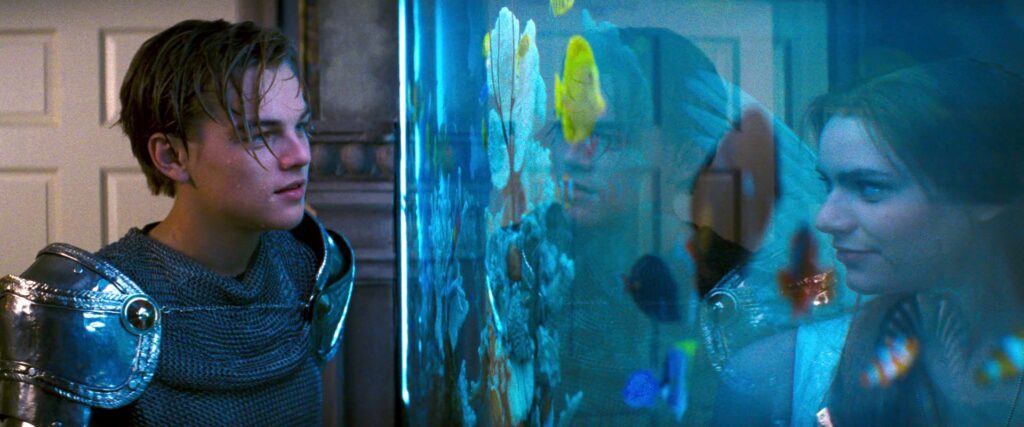
Romeo (Leonardo DiCaprio), in a costume of knight in shining armor, and Juliet (Claire Danes), dressed as an angel with white wings, meet each other for the first time as a masked ball. They discover each other’s presence through an aquarium. Romeo stands to the left of the frame. The right of the frame is taken up entire by the fish tank, with tropical fish swimming near Juliet’s face.
Beyond the use of the water motif for romantic purposes to cue the film audiences, the composition of this scene also serves the two characters, because they not only see each other through the fish tank, but also themselves through the reflection of their image on the glass.
Juliet’s life has revolved around her parents’ wishes and arrangements. Here, at the party, for the first time in her life, she sees her own reflection in the aquarium (along with Romeo’s face). Juliet finally sees herself and her own desire and needs. Romeo, too, sees both Juliet and himself for the first time. The water motif provides clarity for both characters’ self-discovery and thought processes. Thus the composition turns a classic tale of “love at first sight” into a scene of “self-love for the first time.”
Elements
As a general rule of thumb, the human gaze is drawn to the top area of a frame (the headroom). Filmmakers often use this space to convey the most important information, such as the face or eyes of a character. Close-up shots often feature actors’ eyes, because humans tend to be drawn to others’ eyes.
For example, the framing here makes Marina (played by Daniela Vega) the center of attention in this confrontational scene in Sebastián Lelio’s 2017 A Fantastic Woman (Una Mujer Fantástica). The Chilean director offered the lead role to the mezzo-soprano singer Daniela Vega who is an openly trans actor. The film depicts the struggle of a trans woman.
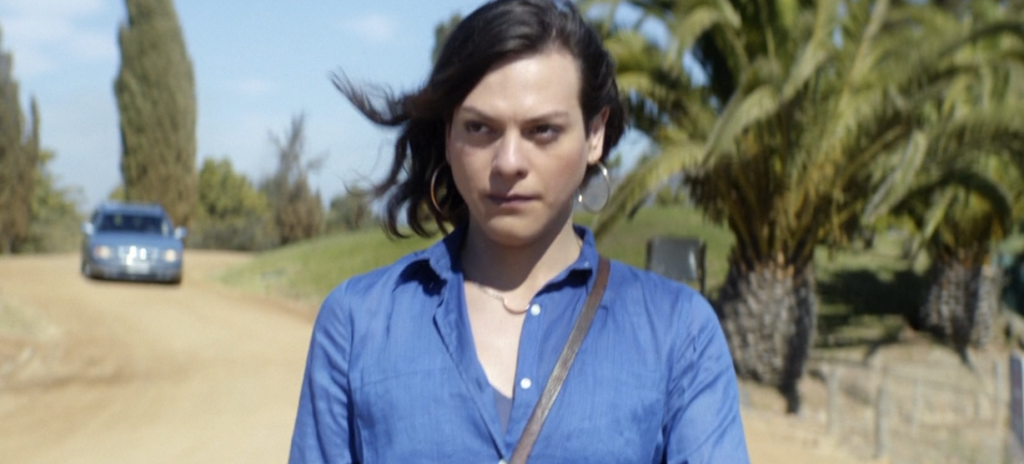
There is no nondiegetic sound or soundtrack. Thanks to the frame’s composition, her eyes become the focal point.
Later, in the same scene, we see a frustrated Marina jumping onto the hood of the car of the characters who have been harassing and misgendering her. Marina confronts them through the windshield.
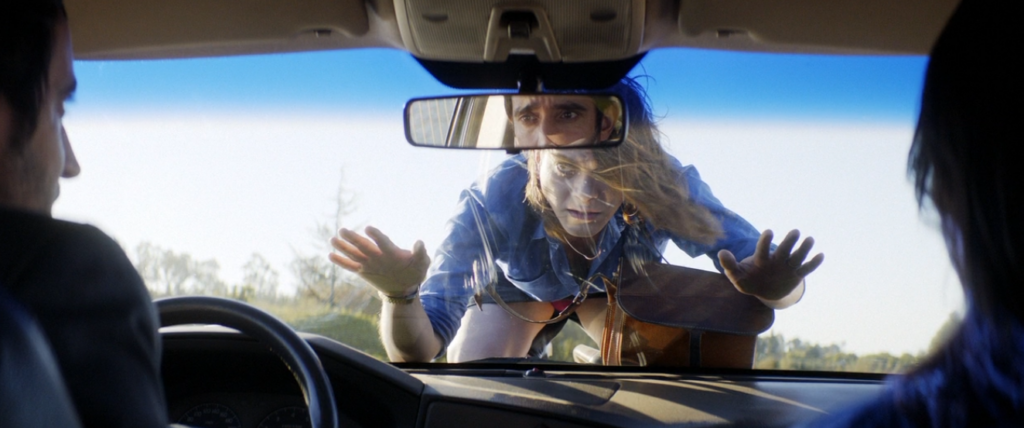
To fully appreciate the composition of these frames, we need to become acquainted with the rule of thirds. When composing a frame, filmmakers often use the rule of thirds to organize different elements on screen.
Imagine drawing two horizontal and two vertical lines on screen. Ensure equal distance between the horizontal and between the vertical lines. This would create a grid.
Now you have nine small boxes on the top, middle, bottom, left, center, and right. When arranging the relative positions of your actors and props, look for a balance among the different grids. Filmmakers tend to avoid putting all the elements on one side or another (crowding one or two boxes).
Later in the scene in A Fantastic Woman, Marina jumps from the hood to the roof of the car. In the film stills above and below, you can clearly see the rule of thirds at work.
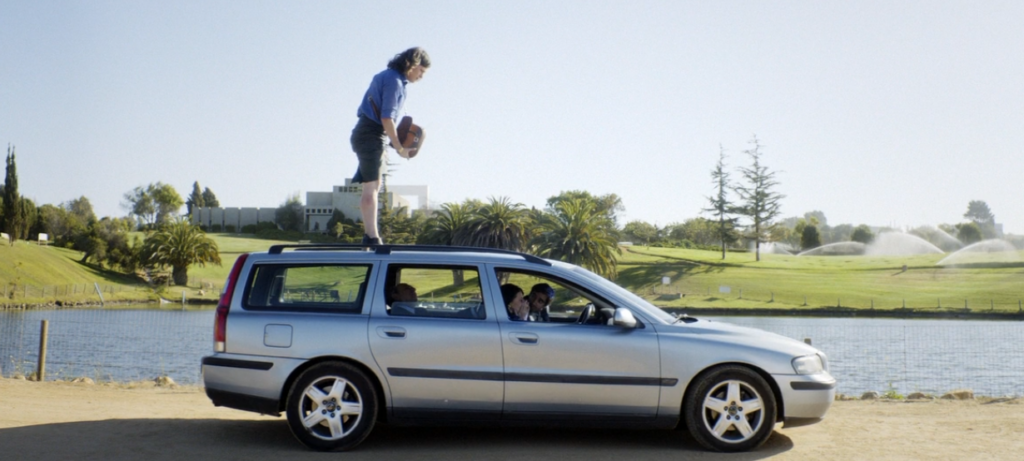
Exercise
Let us apply the rule of thirds to another film: Twelve Years a Slave, directed by Steve McQueen (2013). In the scene below, Solomon Northup (played by Chiwetel Ejiofor) appears in a funeral scene where people sing in honor of Uncle Abram. The mood is somber.
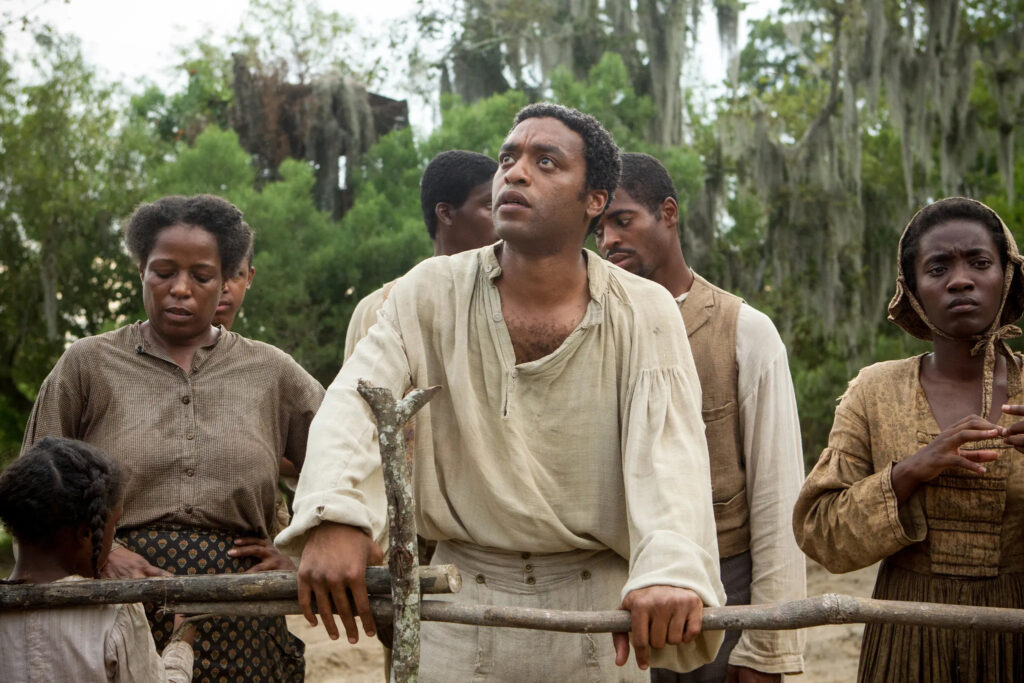
Following the rule of thirds, we can draw a red grid on this frame to see how the scene is composed.
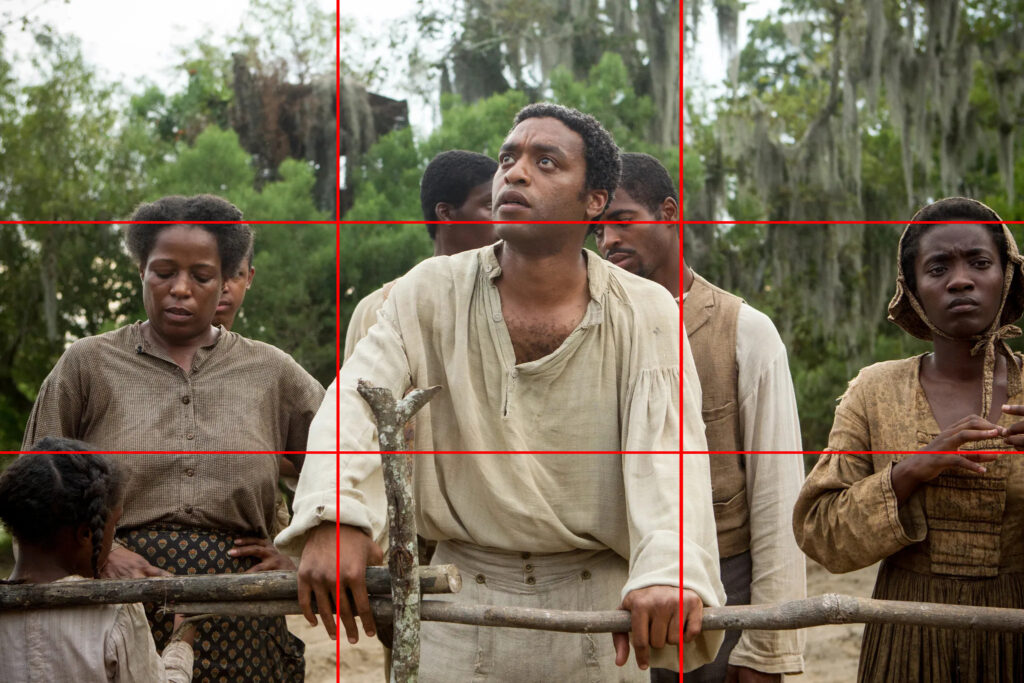
Solomon Northup is front and center, and is the focal point of the camera. His eyes occupy the part of the frame that draws the most attention from film viewers.
Your Turn: Analyze the composition of the following scene from Theodore Melfi’s Hidden Figures (2016), a film about female Black mathematicians who played a vital role in the U.S. space program in the early 1960s.
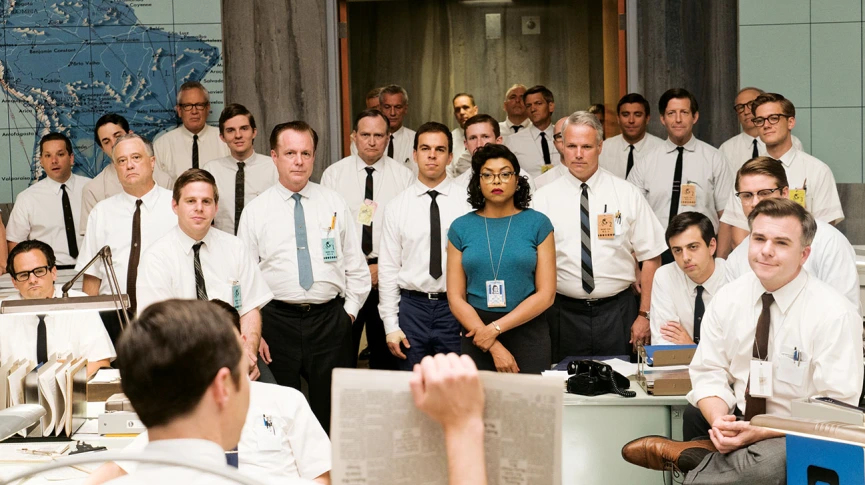
In this scene, the director (played by Kevin Costner) tells the NASA staff in Langley that they have to double their efforts in order to beat the Soviets in the Space Race.
To help you along, here is the frame with the red grid showing the rule of thirds.
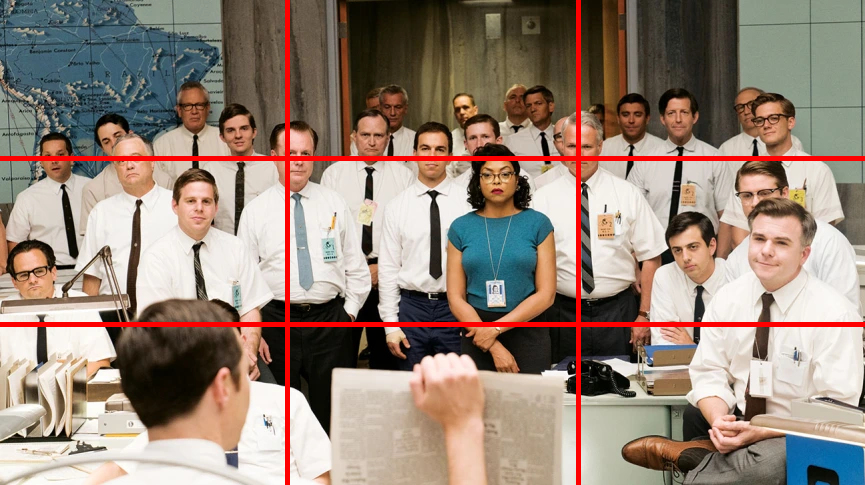
Katherine Johnson (played by Taraji P. Henson) is front and center. How does the filmmaker signal her importance and simultaneously outcast status at NASA?
